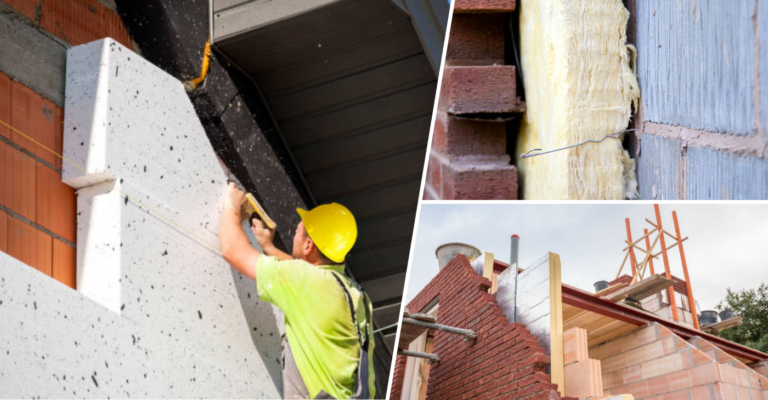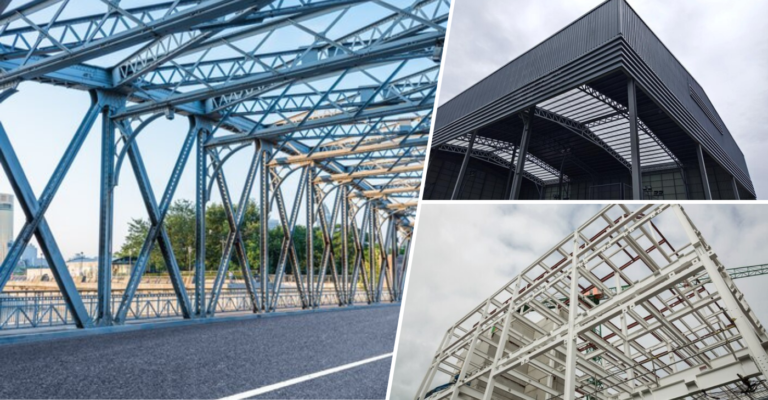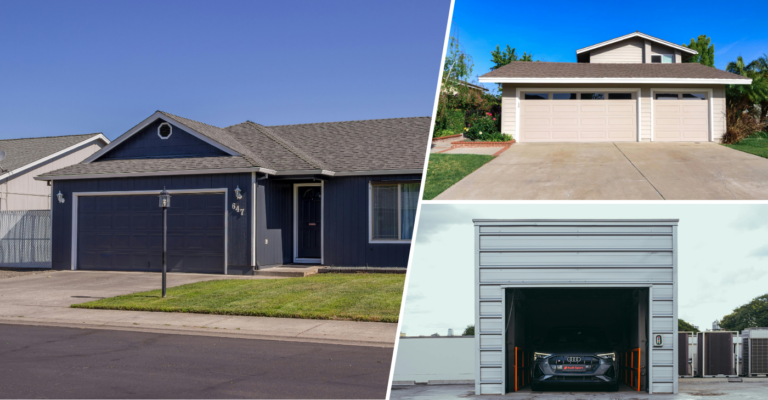BIM architecture software – Level up your designs with top BIM software
BIM – The foundation of modern construction
Building Information Modeling (BIM) is a game-changer in the construction industry, acting as the cornerstone of modern architecture and construction practices. At its core, BIM architecture software is a digital representation of the physical and functional characteristics of a facility. This intelligent model-based process provides a shared knowledge resource for information about a facility, forming a reliable basis for decisions during its lifecycle from inception onward.
One of the most transformative aspects of BIM is its ability to create detailed 3D models that integrate crucial data related to various building components. Unlike traditional blueprints, which offer only a two-dimensional view, BIM models allow architects, engineers, and construction professionals to visualize the entire structure in three dimensions, complete with detailed information about each element. This visualization capability not only aids in design accuracy but also enhances collaboration among stakeholders.
Furthermore, BIM extends beyond just 3D modeling. It incorporates time-related information (4D), cost data (5D), sustainability aspects (6D), and facility management details (7D). This multi-dimensional approach ensures that every phase of the construction process is meticulously planned and executed. By using BIM, teams can anticipate and mitigate potential issues before they arise, streamline workflows, and ultimately deliver higher-quality projects on time and within budget. As we delve deeper into BIM architecture software, we’ll explore how these tools can elevate your design and construction projects to new heights.
Key features to look for in top BIM software
When selecting the right BIM software for your architectural and construction projects, it’s crucial to understand the key features that can significantly enhance your workflow and project outcomes. Top BIM software solutions offer a range of functionalities designed to streamline the design, planning, and execution processes, ensuring that you achieve the highest levels of efficiency and accuracy.
-
Comprehensive 3D modeling
The core feature of any BIM architecture software is its ability to create detailed and accurate 3D models. These models should include precise geometry and comprehensive data about building components, allowing for a more thorough understanding of the project.
-
Interoperability
Effective BIM software must support interoperability, enabling seamless data exchange between different software platforms and stakeholders. This ensures that architects, engineers, and contractors can collaborate efficiently, reducing errors and miscommunication.
-
Parametric design
Parametric design capabilities allow users to modify one aspect of the model, with the changes automatically reflected throughout the entire project. This feature is essential for maintaining consistency and saving time during design revisions.
-
Clash detection
Top BIM architecture software should include clash detection tools to identify and resolve conflicts between different building systems (e.g., electrical, plumbing, HVAC) before construction begins. This minimizes costly rework and delays.
-
4D and 5D BIM
Beyond 3D modeling, advanced BIM software incorporates 4D (time) and 5D (cost) dimensions. 4D BIM allows for construction scheduling and visualization of project timelines, while 5D BIM integrates cost estimation and budgeting, providing a more holistic view of the project.
-
Sustainability analysis
With growing emphasis on green building practices, many BIM tools offer sustainability analysis features. These tools assess the environmental impact of materials and design choices, helping to create more energy-efficient and sustainable buildings.
-
Facility management
The best BIM software extends its usefulness beyond the construction phase into facility management. By providing detailed information on building components and maintenance schedules, BIM aids in the efficient operation and upkeep of the facility post-construction.
-
Collaboration tools
Robust collaboration features, such as cloud-based access, real-time updates, and version control, are essential for keeping all team members on the same page. This fosters better communication and collaboration, leading to smoother project execution.

Top BIM software solutions
Selecting the right BIM software can significantly impact the efficiency and success of your architectural projects. Here, we explore some of the top BIM software solutions available, highlighting their unique features and benefits to help you make an informed decision.
1. Autodesk Revit
Autodesk revit is one of the most widely used BIM architecture software solutions in the industry. Known for its robust set of tools for architectural design, MEP, and structural engineering, Revit enables comprehensive 3D modeling and documentation. Its parametric design capabilities ensure that any changes made to the model are automatically updated throughout the project. Revit supports 4D and 5D BIM, allowing for detailed scheduling and cost estimation.
2. ArchiCAD
Developed by Graphisoft, ArchiCAD is another leading BIM software, particularly popular among architects. ArchiCAD offers an intuitive interface and powerful design tools that make it easy to create detailed 3D models. It also supports collaborative workflows through its BIMcloud service, enabling real-time collaboration among team members. ArchiCAD’s integration with other design software and its ability to handle large-scale projects efficiently make it a top choice for many professionals.
3. Bentley Systems AECOsim Building Designer
AECOsim Building Designer is a comprehensive BIM solution from Bentley Systems that caters to the needs of architects, engineers, and construction professionals. It provides advanced modeling tools, including parametric design and clash detection, ensuring that complex projects are designed and executed with precision. AECOsim’s interoperability with other Bentley products and its strong focus on infrastructure projects make it ideal for large-scale developments.
4. Trimble SketchUp
While SketchUp is often associated with 3D modeling for general design purposes, its Pro version offers robust BIM capabilities. SketchUp Pro allows for detailed architectural modeling, documentation, and visualization. Its user-friendly interface and extensive library of plugins make it a versatile tool for both beginners and experienced professionals. The addition of Trimble Connect enhances collaboration by enabling cloud-based sharing and project management.
5. Vectorworks Architect
Vectorworks Architect stands out for its versatility and integrated design capabilities. It offers powerful BIM tools along with advanced rendering features, making it suitable for detailed architectural designs and presentations. Vectorworks supports collaboration through its Project Sharing feature, and its extensive import/export options ensure compatibility with other software platforms.
6. Allplan
Allplan, developed by Nemetschek, is known for its strong focus on both architectural and engineering aspects of BIM. It offers precise modeling tools, robust collaboration features, and seamless integration with other Nemetschek products. Allplan’s ability to handle detailed reinforcement modeling and its support for open BIM standards make it a preferred choice for complex construction projects.
7. Rhino with VisualARQ
Rhino, combined with the VisualARQ plugin, provides a flexible BIM solution that integrates well with other design and modeling tools. Rhino’s freeform modeling capabilities, coupled with VisualARQ’s BIM features, offer a unique approach to architectural design. This combination is particularly useful for projects requiring intricate and innovative design elements.

Integrating BIM with Other Construction Technologies
Integrating BIM with other advanced technologies can significantly improve project efficiency, accuracy, and success. Here’s how different technologies work with BIM to enhance construction processes:
1. BIM and GIS (Geographic information systems)
Combining BIM with GIS provides a detailed view of a project’s spatial context. GIS adds geographic data like topography and infrastructure to the BIM model, helping with site analysis and planning. This integration makes it easier to understand the impact of terrain on design and assess environmental risks.
2. BIM and IoT (Internet of things)
Integrating BIM with IoT devices allows real-time monitoring throughout the building lifecycle. IoT sensors track energy usage, occupancy, temperature, and more. This data feeds back into the BIM model to optimize building performance and maintenance. IoT can also monitor construction equipment and materials, improving resource management.
3. BIM and drones
Drones are used for site surveys, progress monitoring, and inspections. When integrated with BIM, drones capture high-resolution images and create 3D site models. These models can be compared with the BIM design to track progress and identify discrepancies, helping to reduce rework and delays.
4. BIM and AR/VR (Augmented Reality/Virtual Reality)
AR and VR technologies enhance BIM by providing immersive visualization. VR enables virtual walkthroughs of the design before construction, while AR overlays digital information on the physical site for installation and maintenance. These technologies improve communication and project visualization.
5. BIM and robotics
Robotics, like automated bricklaying machines, can be integrated with BIM to automate repetitive tasks. BIM models provide precise instructions to robots, ensuring accuracy and consistency. This speeds up construction, reduces human error, and increases on-site safety.
6. BIM and 3D Printing
3D printing in construction, or additive manufacturing, uses BIM models to create custom building components. BIM provides the design information needed for 3D printers to fabricate complex structures, offering material efficiency, design flexibility, and faster construction.
7. BIM and cloud computing
Cloud-based BIM platforms enable real-time collaboration and data sharing among project stakeholders. Hosting BIM models in the cloud allows teams to access, update, and track project information in real-time, improving coordination and project management.
Future trends in BIM technology
BIM technology is rapidly evolving and is set to transform the construction industry in several exciting ways. Here’s a look at some key trends:
Better software compatibility – Future BIM tools will work more seamlessly with different software, making collaboration easier and more efficient.
AI and machine learning – Integrating AI and machine learning will help BIM tools analyze data, predict issues, and optimize designs, leading to smarter and more accurate project planning.
Digital twins – Digital twins will create digital replicas of physical buildings, allowing for real-time monitoring and management, which will improve maintenance and performance.
AR and V – Augmented and virtual reality will enhance BIM by offering immersive experiences, such as virtual walkthroughs and on-site digital overlays, improving design reviews and construction accuracy.
Cloud collaboration – Cloud-based BIM platforms will enable real-time collaboration from anywhere, ensuring everyone has access to the latest project information and reducing errors.
Sustainable design – BIM tools will focus more on sustainability, helping to design energy-efficient buildings and assess environmental impact.
Modular and prefab construction – BIM will support the rise of modular and prefabricated construction, making the building process faster and reducing waste.
Advanced visualization and analytics – Enhanced visualization and data analysis tools in BIM will provide deeper insights into projects, helping to track progress and manage risks better.
Robotics and automation – Robots guided by BIM models will perform construction tasks like bricklaying and material handling, increasing efficiency and safety.
Blockchain – Blockchain technology will secure and streamline data management and transactions in BIM, building trust and simplifying contract management.







